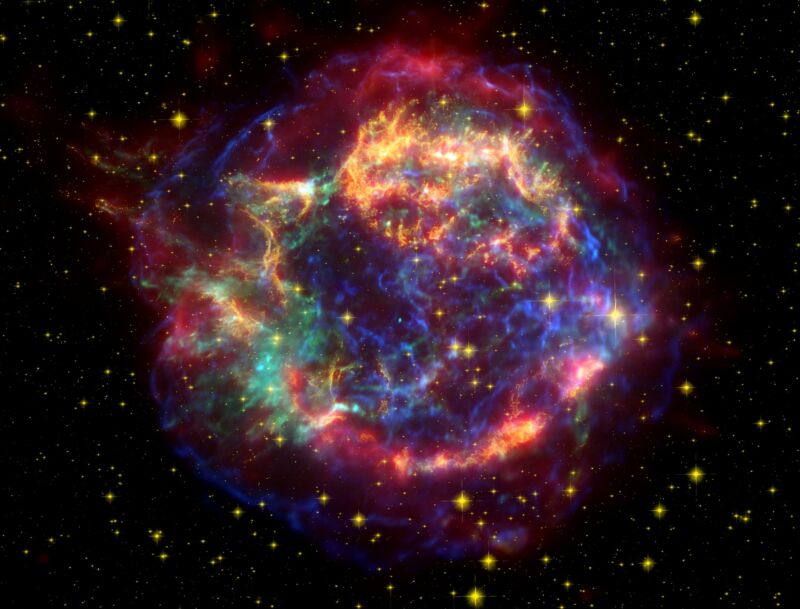New data is evidence of process that powers exploding stars

Enlarge / A multi-wavelength image of the Cassiopeia A supernova remnant. (credit: Courtesy NASA/JPL-Caltech)
Supernovae happen. We've witnessed enough of them that we're pretty sure of that. Why they happen has been another issue entirely. As we've worked to understand the physics that drives these immense explosions, we've occasionally gone through awkward periods when the stars in our models stop exploding. Adding in more realistic physics has generally gotten the models booming again, and right now we're in a period where the latest models appear to be happily self-destructing.
The challenge is trying to find evidence that the physics we're using in our successful models accurately reflects what's going on in a dying star-not an easy task with an event that instantly destroys much of the evidence.
Now, data from the Chandra X-ray Observatory provides a hint that a mechanism used in recent supernova models is probably right. The results are published in this week's issue of Nature.
Read 12 remaining paragraphs | Comments